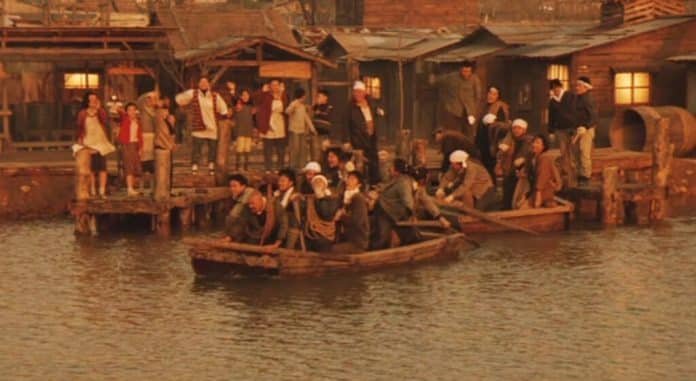
The Osaka Army Arsenal, established by the new Meiji Government in 1870 to rapidly ensure Japan’s self-sufficiency in the production of modern weapons was located right outside the moat surrounding Osaka Castle. With every war Japan fought, the Sino-Japanese War (1894-1895), the Russo-Japanese War (1904-1905) and Japan’s involvement in the First World War, the weapons factory expanded, eventually covering the whole area east of Osaka Castle up to the Hirano River and north to the Neya River.
During WWII, more than 60.000 people worked at the plant which was by then often called “the largest armory of the East“.
Though downtown Osaka was frequently the target of U.S. air raids, the arsenal survived almost unscarred. Until that fateful day, August 14th 1945, the day before Japan’s surrender. A large formation of B-29 bombers attacked, destroying 90% of the facilities in the last large-scale bombing campaign of WWII.
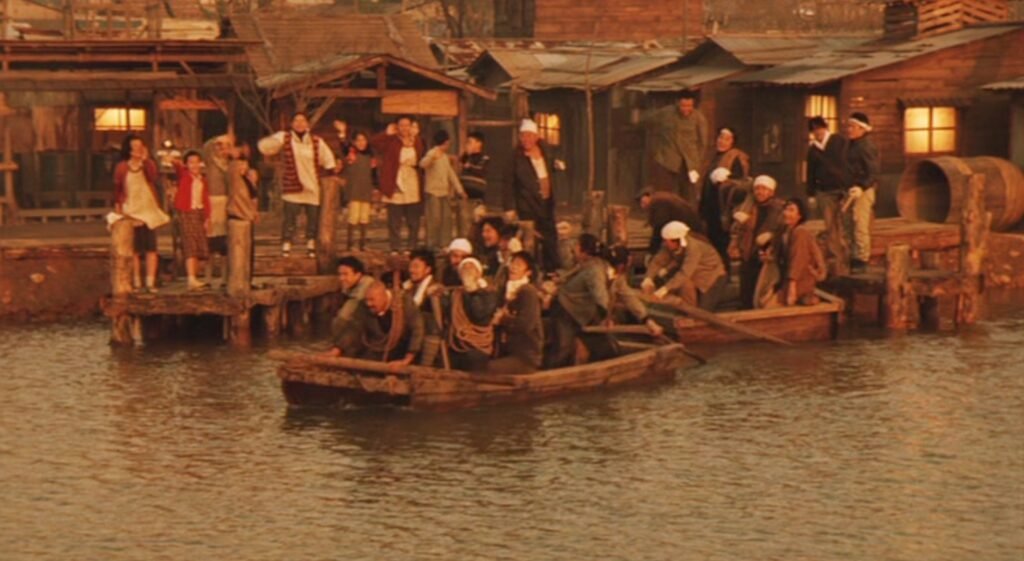
Today, the site of the former Osaka Army Arsenal is covered by the highrises of Osaka Business Park, by Osaka Castle Park as well as the many train tracks of the Osaka Metro Morinomiya Inspection and Maintenance Railyard.
Nothing remains of the old arsenal. Only a small memorial stone in Osaka Castle Park points the area’s history out to the casual visitor.
Table of Contents
Through the Night (Japan / South Korea, 2002) 夜を賭けて
The 2002 movie Through the Night starts out with archival footage of an American WWII bombing raid, claiming that the footage documents the destruction of the Osaka Army Arsenal. Most likely, it’s just generic war footage but the film is not about the bombing raid as such anyway.
After the opening shots of the war planes dropping their bombs, the film cuts to 1958 and that’s the time the story unfolding in the movie takes place.
The film, titled Yoru o kakete in Japanese (which translates to Betting the Night) tells of the residents of a Korean shantytown in close vicinity to the former Osaka Army Arsenal.
One day, an old lady from the shantytown (played by Kirin Kiki) combs through the old arsenal and comes across a piece of precious metal. Her son, played by the always enjoyable Naomasa Musaka, goes off to sell the piece of metal and returns with a horrendous amount of money.
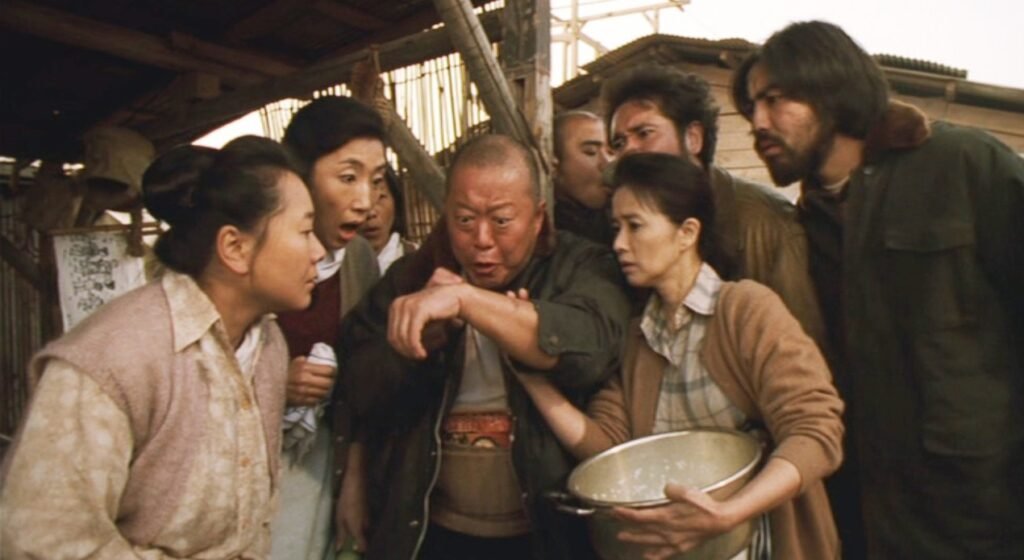
From that day on, the residents of the shantytown set their sights on the old arsenal, expecting great riches to be found there.
The ruined weapon’s factory site is guarded by the police however, making any incursions into the grounds a risky business. To circumvent the police, the Koreans sneak into the old arsenal at night.
The Koreans call their shantytown Apache buraku (Apache hamlet), taking on the name of the American Indian tribe famous for their resistance against white colonization. Like the old Apache in America, these Koreans reject any rules imposed on them by outside forces.
First expeditions into the grounds of the ruined factory prove quite a success. Japanese scrap metal dealers pay high prices for the scavenged material.
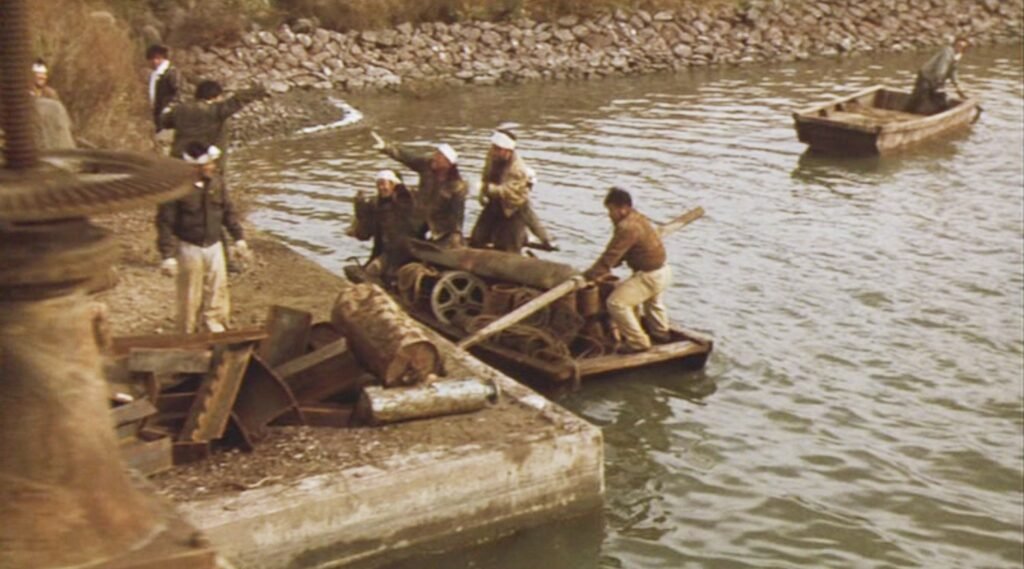
Life in the shantytown turns from poor to bucolic. Large traditional Korean meals are served, Korean makkoli rice liquor flows freely at the frequent parties. Parties that almost always also entail large-scale brawls among the village residents. Good food, lots of drinks and lots of fights, that’s the way of life in the village.
Enter the arrival of Yoshio (Taro Yamamoto). He had been away from the area for many years but now he’s back and he becomes the hero of the film.
Well, sort of the hero. Yoshio, soon a major scrap metal thief, is falling in love with Hatsuko (Ryoo Hyoun-Kyoung), a former prostitute who is portrayed as the genuine pure Korean girl.
In fact, that love story only serves to keep the story in focus, somewhat. There is an endless array of characters involved in the movie and the rambunctious performance of Naomasa Musaka clearly dominates the scenes.
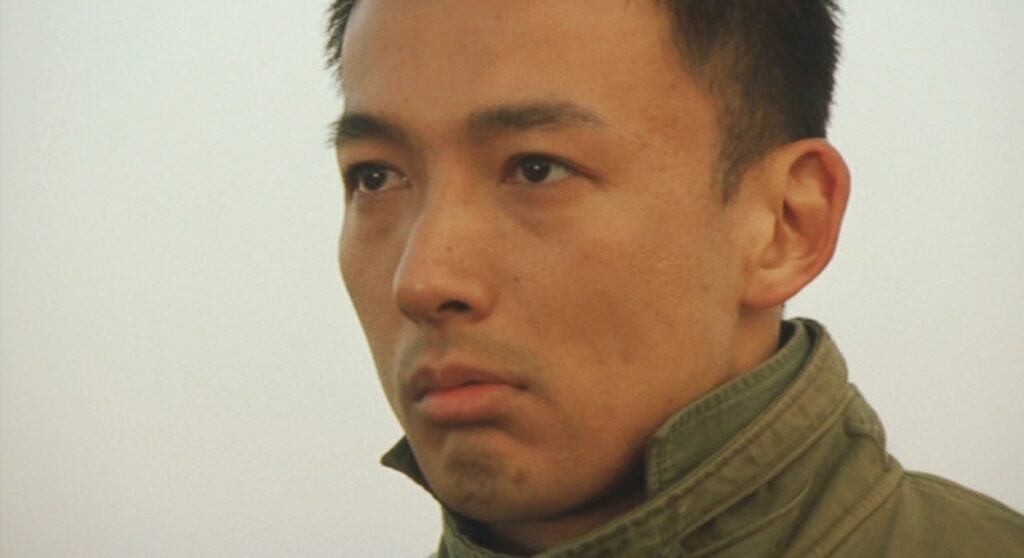
Yoshio (Taro Yamamoto) is good looking, he is passionate, he has his fair share of fighting scenes in the movie. Still, the story told is not about him and Hatsuko, It’s about the life of Koreans in post-war Japan.
One night, one of the Korean scavengers kills a Japanese policeman. From that moment on, the relationship between the villagers and the police changes profoundly.
While it all seemed to be a sort of cat-and-mouse game before, suddenly things turn nasty. The police get serious. The shantytown has to go. The final minutes of the movie turn into an orgy of violence reminiscent of scenes of the American cavalry burning down Indian settlements in 1970s New Hollywood anti-Westerns. Like, say, Soldier Blue (1970).
Koreans in Japan
Korea was annexed by Japan in 1910. From that time on, many Koreans moved to Japan proper with hopes to improve their economic situation while largely aiming at keeping their cultural traditions alive. During World War II, many more Koreans were brought to Japan as forced workers.
After Japan’s defeat in WWII, Korea came under the control of the Allied forces, eventually leading to the creation of two separate Korean states: American-dominated South Korea and Soviet-dominated North Korea.
As a result of those developments, Korean residents in Japan lost their Japanese citizenship. Many returned to (mostly) South Korea while many others stayed on.
Struggling to survive in Japan, Koreans either started to establish themselves in traditional Koreatowns like Osaka’s Tsuruhashi neighborhood in Ikuno Ward or they built up ramshackle hamlets wherever they could find a place. Bombed-out Osaka offered plenty of such places.
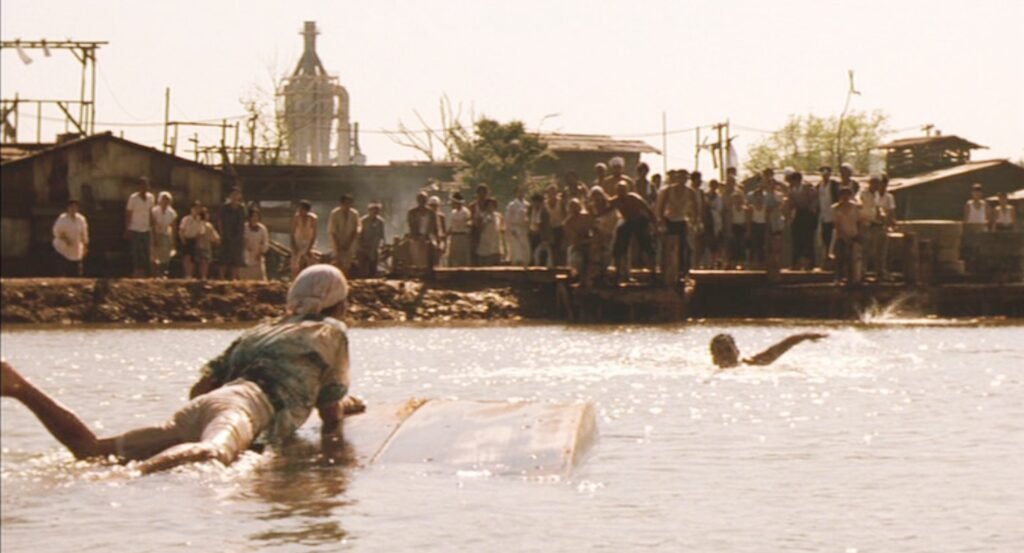
The Novel
Korean-Japanese writer Yang Sok-il (born in 1936) grew up in Osaka’s Ikuno Ward, the ward with Osaka’s largest Korean resident population. He wrote a number of books telling of the experience, most notably Blood and Bones (1998) which was turned into the 2004 film of the same title, starring Takeshi Kitano. Read a review of the film here.
Yang worked in his youth for a time for a scrap-iron trader situated in a shantytown just as depicted in the movie. Based on the experience, he wrote the book Yoru o kakete, published in 1994. The film Through the Night / Yoru o kakete is based on this novel.
The Director
Through the Night was directed by Sujin Kim, himself a Korean-Japanese, or zainichi to use the Japanese term. Born in Tokyo in 1954, Kim joined the Tokyo-based avant-garde Situation Theatre Troupe (Gekidan Jokyo Gekijo) run by legendary theater radical Kara Juro in his youth.
Kara Juro disbanded the Situation Theatre Troupe in 1988, only to start a new theater group, the Kara-gumi (Kara Gang). Sujin Kim didn’t join the new Kara-gumi but formed his own theater group, the Shinjuku Ryozanpaku.
With his own theater troupe, Sujin Kim put his focus more on the Korean-Japanese experience, producing many plays reflecting upon the situation of resident Koreans in Japan.
At the same time, he was busy as an actor in Japanese films, most notably in movies by cult film director Shinya Tsukamoto. Playing roles in Tsukamoto’s high octane Tetsuo II: Body Hammer (1992), in the gangster drama Bullet Ballet (1998) and in the strange historic mystery thriller Gemini (1999).
Eventually, Sujin Kim branched out into movies as a director by himself, Through the Night being one of his most ambitious projects.
Kara Juro, Sujin Kim’s early mentor can be seen in Through the Night playing the role of the wise old village elder always ready to smooth down the situation when the Koreans come to blows with each other as they frequently do. He then offers more constructive ideas… ideas even the effervescent rebel rouser played by Naomasa Musaka would accept.
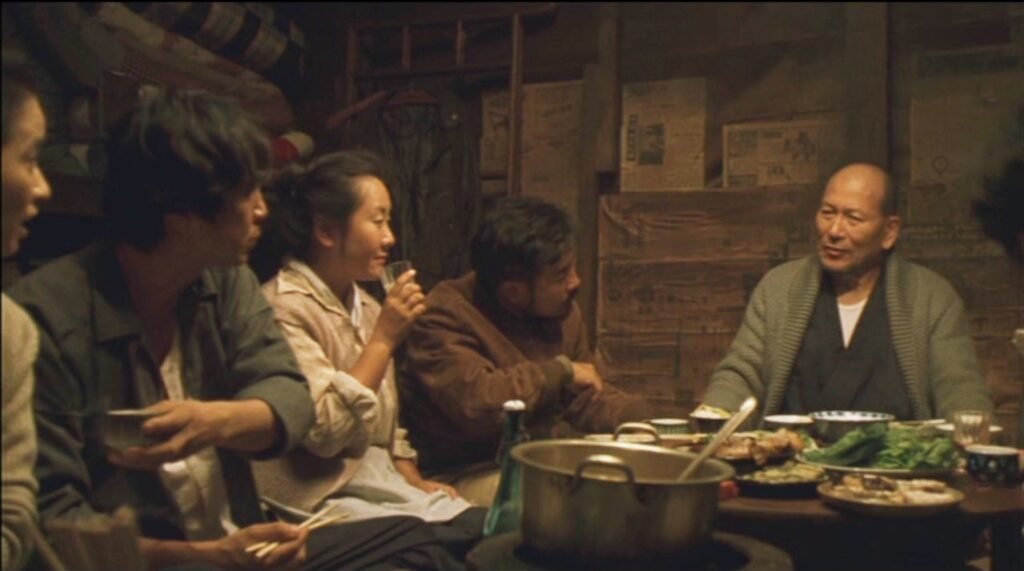
Osaka Locations
The opening shots of the movie, the archival bombing footage, clearly establish Osaka as the setting of the film. While recorded conversations between American pilots are audible in English and presented with Japanese subtitles, another set of subtitles spells out that the Osaka Army Arsenal was destroyed on August 14th 1945.
The actual images may have been taken elsewhere but that doesn’t matter. Any American WWII bombing raid footage would suffice.
The cut to 1958 makes clear that the Korean shantytown was located close to the ruins of the Osaka Army Arsenal.
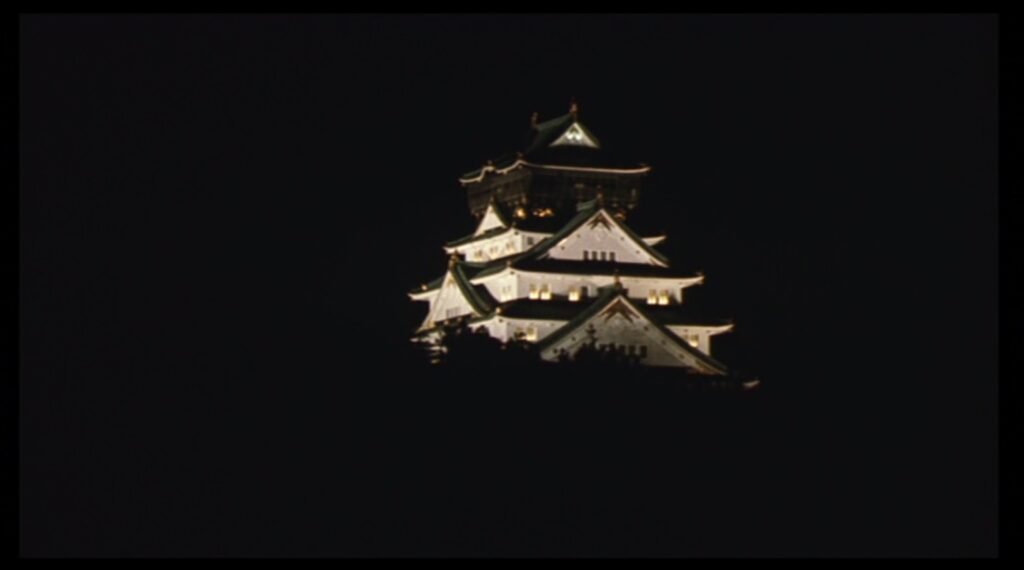
Occasional shots of Osaka Castle throughout the movie further establish that the movie takes place in the heart of Osaka.
Heavy Osaka dialect is spoken throughout, often in a curious mix with Korean addresses. Like dialogue sentences starting with halmoni (grandmother) or aboji (father) to then continue in thick Kansai-dialect Japanese.
Japanese – South Korean Co-Productions
Up to 1998, all Japanese pop culture was officially banned in South Korea. Manga, anime, movies, everything. Newly elected president Kim Dae-jung, always strongly opposed to the dictatorial ways of his predecessors, lifted the ban. Gradually. But within a few years, any Japanese movie could be shown in South Korea.
With this opening of the market, Japanese – South Korean movie co-productions also began to flourish. Japanese and South Korean actors performing together in one movie, telling stories of mutual interest to audiences in both countries… that became the way to go for quite a lot of independent producers from both sides of the Tsushima Strait.
Official support for such productions was generous (especially from the Soutb Korean side), much help was rendered by the newly created local film commissions hoping to promote their localities as profitable movie locations and perhaps, as a result of the movies, tourist attractions.
In the early 2000s, there was a rush in Japan – South Korea co-productions. Through the Night was one of the movies made at that time in that situation. Perhaps it was the only time such a movie could have been made at all.
The Gunsan Set
The DVD of Through the Night comes with a detailed making-of documentary of the movie, titled Yorukake, revealing much of the production process of the movie.
For the independently produced movie, Sujin Kim’s team rented a large empty lot on the outskirts of the city of Gunsan on the west coast of South Korea.
Though in the finally released movie a good number of popular Japanese actors can be seen on screen, the making of the movie was to a large part a theatrical group experience.
Volunteers willing to build up the shantytown set on that empty lot were sought via advertisements throughout Japan. Members of Sujin Kim’s theater troupe were of course welcome but others could also join in – provided they convinced the director by writing an essay detailing their motivation.
Many of those volunteers were Korean-Japanese wondering about their true identity but there were also many Japanese who found the project intriguing.
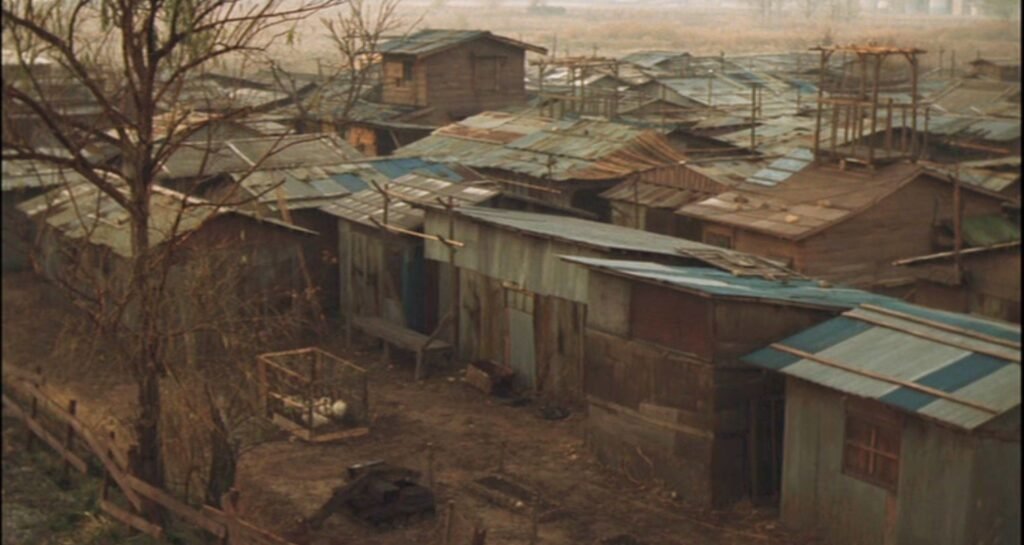
In the course of three months, those volunteers built up the shantytown serving as film set from scratch.
In a short distance behind the set was a large industrial facility. It became part of the movie scenery. Those multiple chimneys right behind the shacks of the shantytown provided a perfect Osaka scenery.
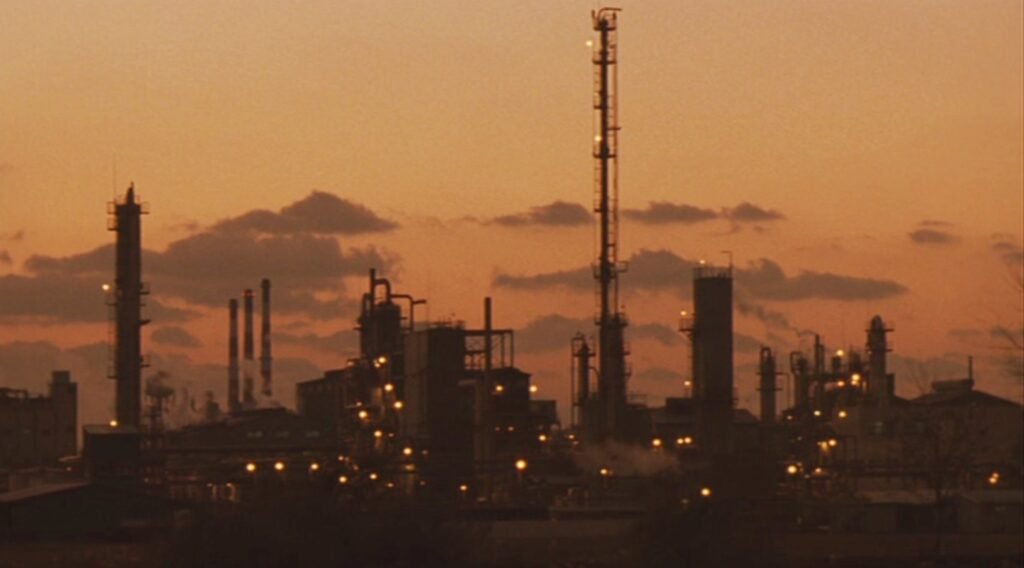
A hired Korean construction company dug a large pond resembling a river in front of the set. That’s the river the characters in the movie use to transport their scavenged scrap metal.
Those volunteers were then also used as extras in the shooting of the movie. The shantytown had a large population – and that needed to show in the picture.
Ironically, the large police force raiding and destroying the village at the end of movie consisted to the most part of extras hired locally in Korea. They had no speaking roles, they only needed to know how to wield a baton and how to chase people over the roofs of a shantytown. Skills they had most certainly acquired during their service in the South Korean military.
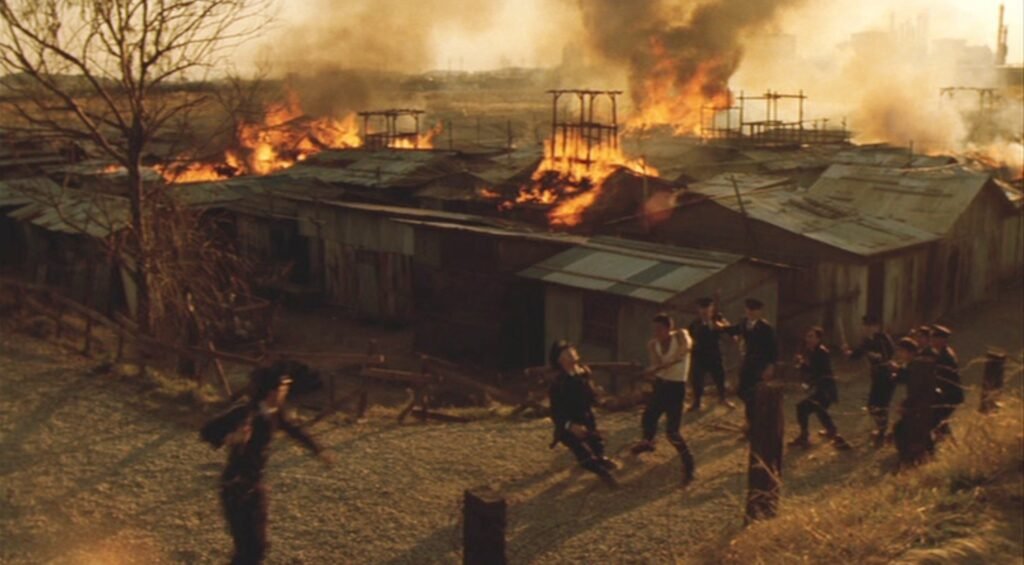
At the end of Yorukake, the making-of documentary of Through the Night, we see the movie set razed by heavy machinery. The land is returned to an empty lot outside a large industrial facility just as it was before filming commenced.
Back in Osaka
Walking through Osaka Castle Park might feel a little different after learning of the history of the area. The park was not created by ancient gardeners in the service of the samurai… it’s a post-war creation situated on the grounds of perhaps the deadliest weapons factory in Japanese history. Who knows what’s still buried deep in the ground below those lovely cherry trees.




















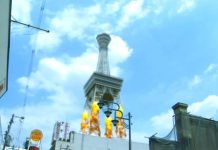





Hi Johannas. Wes. Excellent article!!